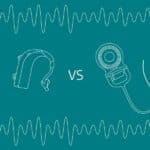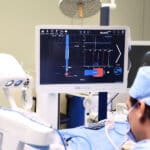
The world of hearing is full of fascinating stories, but often we don’t see the people working behind the scenes. That’s why we met with three of our dedicated MED-EL employees to learn more about their work in cochlear implant (CI) manufacturing.

The world of hearing is full of fascinating stories, but often we don’t see the people working behind the scenes. That’s why we met with three of our dedicated MED-EL employees to learn more about their work in cochlear implant (CI) manufacturing.

The best shoes are the ones that fit your feet. And the best cochlear implant is the one that fits your ear! As the name suggests, an individualized cochlear implant is designed to fit your individual cochlea. Why is this important? Because it means you can have your best hearing.

Cochleae come in all shapes and sizes, and with OTOPLAN software, your surgeon can select the right electrode array to fit your individual cochlea. That way your cochlear implant can bring you closest to natural hearing. OTOPLAN, in combination with MED-EL’s broad portfolio of electrode arrays, makes cochlear implant individualization possible.

There have been three generations of the MED-EL audio processors for bone conduction and middle ear implants: Amadé, SAMBA, and SAMBA 2. But what is the difference between them? We’ll take a closer look at that today—and even give you a chance to hear the difference. Find out in which situations the SAMBA 2 is technologically superior to the other processor models, how it suppresses noise, and what a classifier really does.

Hearing aids and cochlear implants are both solutions for hearing loss. But there are some important differences, from how they work to what level of hearing loss they treat. In this article, we’ll take a closer look at both types of devices.

Ever wondered what cochlear implants will be like one, five, or even 10 years from now? From invisible cochlear implants to robot-powered surgery, we look at what the future of cochlear implants holds.